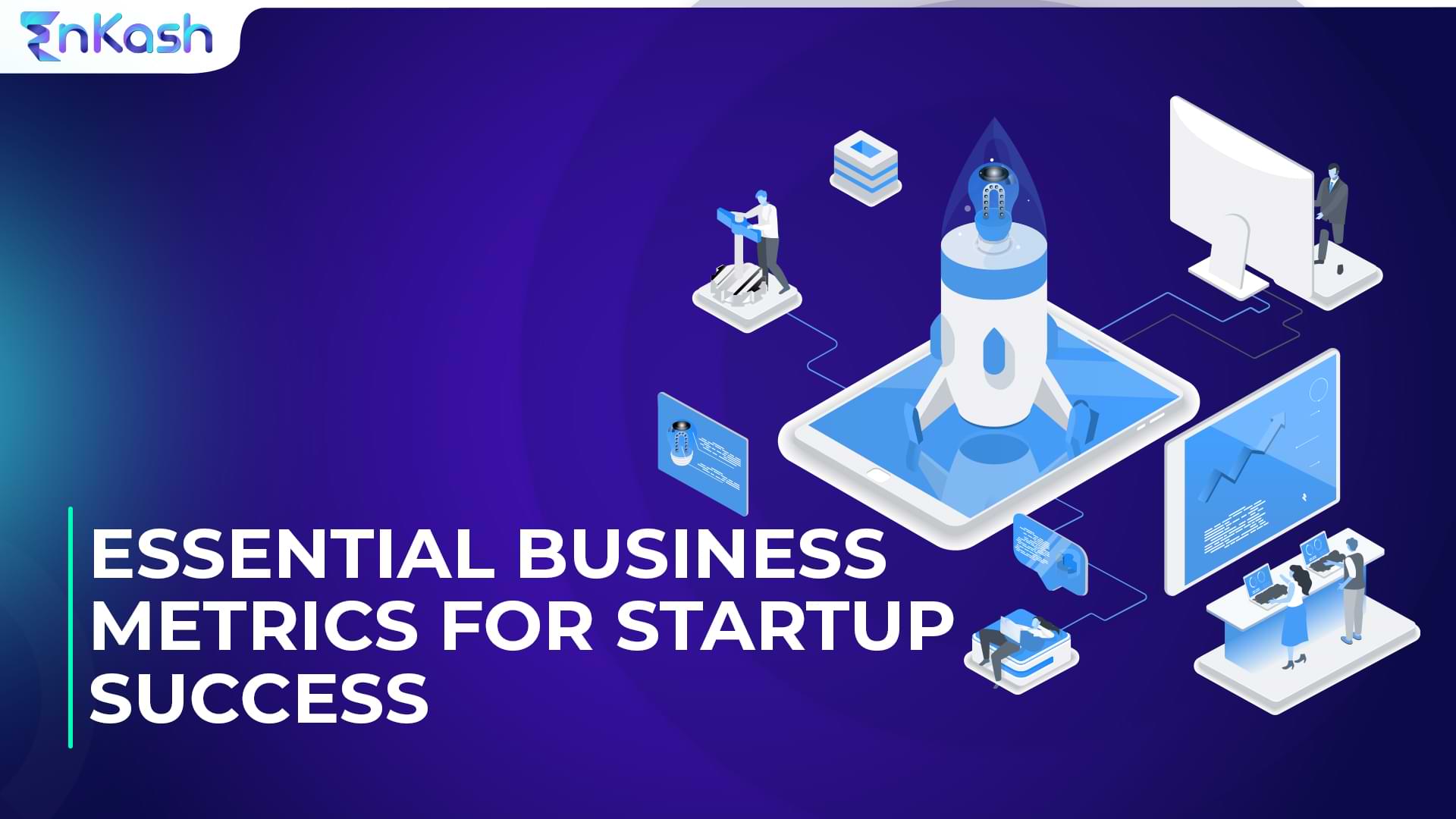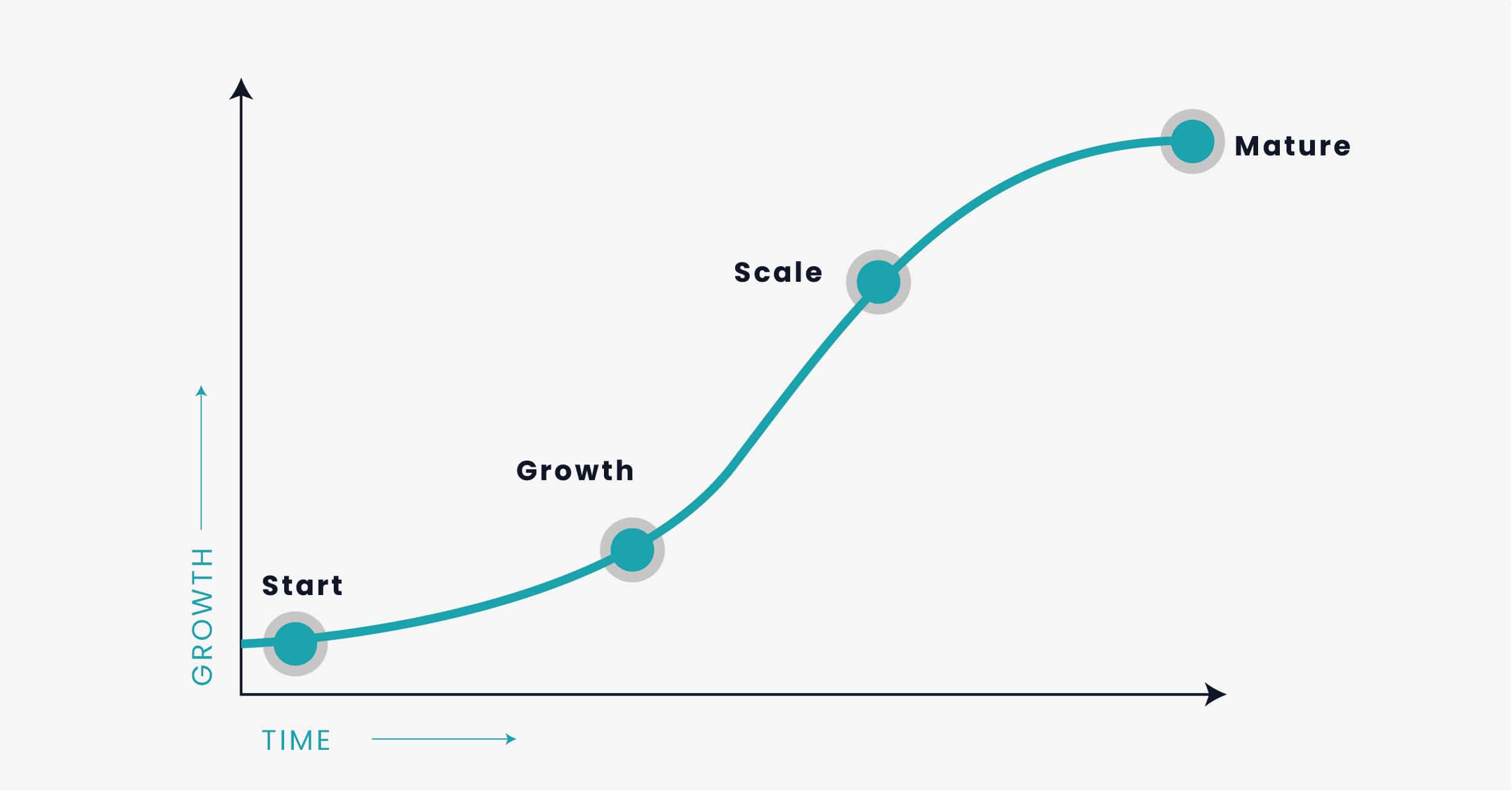From Seed to Scale: Understanding the Growth Journey
Startup growth and scaling is a complex and multifaceted process that requires careful planning, strategic decision making, and a deep understanding of the startup’s life cycle. From seed to scale, startups go through various stages, each with its unique challenges and opportunities. Understanding these stages is crucial for navigating the growth journey effectively and achieving long-term success.
The startup life cycle typically begins with the seed stage, where the focus is on developing a viable product or service, building a strong team, and securing initial funding. As the startup grows, it enters the scaling stage, where the focus shifts to expanding the customer base, increasing revenue, and improving operational efficiency. However, scaling too quickly can be detrimental to the startup’s health, and it’s essential to balance growth with sustainability.
According to a study by CB Insights, the top reasons why startups fail include lack of market need, running out of cash, and not having the right team in place. These challenges highlight the importance of understanding the growth journey and making informed decisions at each stage. By doing so, startups can avoid common pitfalls and set themselves up for success.
Startup growth and scaling is not just about achieving rapid growth; it’s about building a sustainable business model that can withstand the test of time. It requires a deep understanding of the market, the competition, and the startup’s unique value proposition. By taking a strategic and informed approach to growth, startups can achieve long-term success and create a lasting impact in their industry.
Building a Strong Foundation: Essential Elements for Growth
A strong foundation is crucial for startup growth and scaling. A solid business model, a talented team, and a scalable infrastructure are essential elements that can make or break a startup’s success. A well-defined business model provides a clear direction and focus for the startup, while a talented team brings the necessary skills and expertise to execute the plan. A scalable infrastructure, on the other hand, enables the startup to adapt to changing demands and grow efficiently.
Successful startups like Airbnb and Uber have built strong foundations for growth by focusing on these essential elements. Airbnb’s business model, for example, is built around a robust platform that connects hosts and guests, while its talented team has developed a scalable infrastructure that can handle millions of users. Similarly, Uber’s business model is centered around a scalable platform that connects drivers and riders, while its team has developed a robust infrastructure that can handle rapid growth.
A solid business model should be centered around a unique value proposition that differentiates the startup from its competitors. It should also be flexible enough to adapt to changing market conditions and customer needs. A talented team, on the other hand, should have a mix of skills and expertise that can drive growth and innovation. This includes skills in areas like marketing, sales, product development, and operations.
A scalable infrastructure is also critical for startup growth and scaling. This includes investing in technology that can handle rapid growth, such as cloud computing and automation tools. It also includes developing processes and systems that can adapt to changing demands, such as customer support and logistics.
By focusing on these essential elements, startups can build a strong foundation for growth and scaling. This foundation will enable them to navigate the challenges of startup growth and scaling, and achieve long-term success in their industry.
How to Drive Growth through Strategic Decision Making
Strategic decision making is critical for driving growth and scaling a startup. It involves making informed decisions that align with the startup’s goals and objectives, and that take into account the competitive landscape, market trends, and customer needs. By making strategic decisions, startups can identify new opportunities for growth, optimize their operations, and stay ahead of the competition.
One way to drive growth through strategic decision making is to identify new markets and customer segments. This can involve conducting market research, analyzing customer data, and identifying gaps in the market that the startup can fill. For example, Airbnb identified a gap in the market for short-term vacation rentals and developed a platform that connected hosts and guests. Similarly, Uber identified a gap in the market for ride-sharing services and developed a platform that connected drivers and riders.
Another way to drive growth through strategic decision making is to develop strategic partnerships. This can involve partnering with other companies, organizations, or individuals to access new markets, technologies, or expertise. For example, Starbucks partnered with Spotify to offer music streaming services to its customers, while Walmart partnered with Google to offer voice-activated shopping services.
Investing in innovation is also critical for driving growth and scaling a startup. This can involve investing in research and development, hiring talented engineers and designers, and encouraging a culture of innovation and experimentation. For example, Amazon invested heavily in artificial intelligence and machine learning, which enabled it to develop innovative products and services such as Alexa and Prime Air.
Finally, startups should also focus on building a strong brand and customer experience. This can involve developing a unique value proposition, creating engaging content and marketing campaigns, and delivering exceptional customer service. By building a strong brand and customer experience, startups can differentiate themselves from the competition, build customer loyalty, and drive growth and scaling.
By making strategic decisions, identifying new markets and customer segments, developing strategic partnerships, investing in innovation, and building a strong brand and customer experience, startups can drive growth and scaling and achieve long-term success.
The Role of Technology in Scaling Your Startup
Technology plays a vital role in scaling a startup, enabling businesses to streamline operations, improve efficiency, and drive growth. As startups navigate the growth journey, they must leverage technology to stay competitive and achieve success. In this section, we will explore the role of technology in scaling a startup, including the use of automation, data analytics, and cloud computing.
Automation is a key technology that startups can use to scale their operations. By automating repetitive tasks and processes, startups can free up resources and focus on high-value activities such as innovation and customer engagement. For example, startups can use marketing automation tools to personalize customer interactions, improve lead generation, and enhance customer experience.
Data analytics is another critical technology that startups can use to drive growth. By analyzing data on customer behavior, market trends, and operational performance, startups can gain valuable insights that inform strategic decision making. For instance, startups can use data analytics to identify new market opportunities, optimize pricing strategies, and improve customer retention.
Cloud computing is a third technology that startups can use to scale their operations. By moving to the cloud, startups can access scalable infrastructure, reduce costs, and improve collaboration. For example, startups can use cloud-based project management tools to streamline workflows, improve communication, and enhance team productivity.
In addition to
Managing Growth Pains: Common Challenges and Solutions
As startups navigate the growth journey, they inevitably encounter challenges that can hinder their progress. Managing growth pains is crucial to sustaining momentum and achieving long-term success. In this section, we will address common challenges that startups face during the growth phase and provide solutions and strategies for overcoming them.
One of the most significant challenges that startups face during growth is managing cash flow. As the business expands, so do its financial obligations. Startups must ensure that they have sufficient funds to meet their growing expenses, invest in new initiatives, and maintain a healthy cash reserve. To manage cash flow effectively, startups can implement a robust financial planning system, prioritize cost control, and maintain a close relationship with their investors and lenders.
Maintaining company culture is another challenge that startups face during growth. As the team expands, it can be difficult to preserve the company’s core values, mission, and vision. Startups must prioritize cultural alignment, invest in employee development, and foster open communication to ensure that their culture remains intact. This can be achieved by implementing regular team-building activities, providing opportunities for growth and development, and recognizing and rewarding employees who embody the company’s values.
Increased competition is a third challenge that startups face during growth. As the business expands, it attracts more attention from competitors, who may try to poach customers, talent, and market share. Startups must stay ahead of the competition by innovating continuously, investing in marketing and branding, and building strong relationships with their customers. This can be achieved by conducting market research, gathering customer feedback, and developing a unique value proposition that differentiates the startup from its competitors.
Other common challenges that startups face during growth include managing complexity, maintaining quality, and ensuring scalability. To manage complexity, startups can implement streamlined processes, automate repetitive tasks, and prioritize simplicity. To maintain quality, startups can invest in quality control measures, conduct regular audits, and prioritize customer satisfaction. To ensure scalability, startups can invest in scalable infrastructure, develop flexible systems, and prioritize adaptability.
To overcome these challenges, startups can adopt several strategies. First, they can prioritize planning and preparation, ensuring that they have a clear roadmap for growth and a robust support system in place. Second, they can invest in talent and technology, ensuring that they have the skills and resources needed to drive growth. Third, they can foster a culture of innovation and experimentation, encouraging employees to think creatively and develop new solutions. Finally, they can maintain a customer-centric approach, prioritizing customer needs and feedback to drive growth and success.
By understanding the common challenges that startups face during growth and adopting effective strategies to overcome them, entrepreneurs can navigate the growth journey with confidence and achieve long-term success. By prioritizing planning, talent, technology, innovation, and customer centricity, startups can manage growth pains and sustain momentum, ultimately achieving startup growth and scaling success.
Scaling Your Team: Hiring and Retaining Top Talent
As a startup grows, it’s essential to build a strong team that can support the company’s expansion. Hiring and retaining top talent is critical to driving growth, innovation, and success. In this section, we will discuss the importance of hiring and retaining top talent, and provide advice on how to build a strong company culture, develop a competitive hiring strategy, and retain key employees.
Building a strong company culture is the foundation of attracting and retaining top talent. A positive company culture fosters a sense of community, encourages collaboration, and motivates employees to work towards a common goal. To build a strong company culture, startups can prioritize transparency, open communication, and employee recognition. This can be achieved by implementing regular team-building activities, providing opportunities for growth and development, and recognizing and rewarding employees who embody the company’s values.
Developing a competitive hiring strategy is also crucial to attracting top talent. Startups can leverage social media, job boards, and employee referrals to find the best candidates. It’s also essential to define a clear job description, identify the key skills and qualifications required for the role, and develop a robust interview process. To stand out from the competition, startups can offer competitive salaries, benefits, and perks, such as flexible working hours, remote work options, and professional development opportunities.
Retaining key employees is equally important to driving growth and success. Startups can retain top talent by providing opportunities for growth and development, recognizing and rewarding employees’ achievements, and fostering a positive company culture. This can be achieved by implementing regular performance reviews, providing training and development opportunities, and recognizing and rewarding employees who embody the company’s values.
In addition to these strategies, startups can also leverage technology to streamline the hiring process, improve candidate experience, and enhance employee engagement. For example, startups can use applicant tracking systems (ATS) to manage job applications, automate candidate communication, and improve the overall hiring process. Startups can also use employee engagement platforms to foster a sense of community, encourage collaboration, and recognize and reward employees’ achievements.
By building a strong company culture, developing a competitive hiring strategy, and retaining key employees, startups can attract and retain top talent, drive growth and innovation, and achieve long-term success. By prioritizing employee satisfaction, engagement, and development, startups can create a positive and productive work environment that fosters growth, innovation, and success.
Some successful startups that have prioritized hiring and retaining top talent include Airbnb, Uber, and LinkedIn. These companies have built strong company cultures, developed competitive hiring strategies, and retained key employees to drive growth and innovation. By following their example, startups can attract and retain top talent, drive growth and success, and achieve startup growth and scaling success.
Measuring Success: Key Metrics for Startup Growth
Measuring success is crucial for startups to evaluate their progress, identify areas for improvement, and make data-driven decisions. In this section, we will discuss the key metrics that startups should track to measure growth and success, and explain how to use data to inform decision making and drive growth.
Revenue growth is a key metric that startups should track to measure growth and success. This metric indicates the rate at which a startup’s revenue is increasing over time. Startups can track revenue growth by monitoring their monthly recurring revenue (MRR), annual recurring revenue (ARR), and customer lifetime value (CLV). By analyzing these metrics, startups can identify trends, patterns, and areas for improvement.
Customer acquisition costs (CAC) is another important metric that startups should track. This metric indicates the cost of acquiring a new customer, including marketing and sales expenses. Startups can track CAC by monitoring their marketing and sales expenses, and calculating the cost of acquiring a new customer. By analyzing CAC, startups can identify areas for improvement and optimize their marketing and sales strategies.
Retention rates are also a critical metric that startups should track. This metric indicates the percentage of customers who remain loyal to a startup over time. Startups can track retention rates by monitoring their customer churn rates, and calculating the percentage of customers who remain loyal. By analyzing retention rates, startups can identify areas for improvement and develop strategies to retain customers.
In addition to these metrics, startups should also track other key performance indicators (KPIs) such as customer satisfaction, net promoter score (NPS), and return on investment (ROI). By tracking these metrics, startups can gain a comprehensive understanding of their growth and success, and make data-driven decisions to drive growth.
To use data to inform decision making and drive growth, startups should follow a data-driven approach. This involves collecting and analyzing data, identifying trends and patterns, and making decisions based on data insights. Startups can use data analytics tools such as Google Analytics, Mixpanel, and Salesforce to collect and analyze data, and make data-driven decisions.
By tracking key metrics and using data to inform decision making, startups can drive growth and success. For example, startups can use data to identify areas for improvement, optimize their marketing and sales strategies, and develop strategies to retain customers. By following a data-driven approach, startups can make informed decisions, drive growth, and achieve startup growth and scaling success.
Some successful startups that have used data to drive growth and success include Airbnb, Uber, and LinkedIn. These companies have used data analytics tools to collect and analyze data, identify trends and patterns, and make data-driven decisions. By following their example, startups can use data to drive growth and success, and achieve startup growth and scaling success.
Sustaining Growth: Long-Term Strategies for Success
Sustaining growth over the long term is a critical challenge for startups. As a startup grows, it’s essential to maintain momentum, adapt to changing market conditions, and continue to innovate. In this section, we will provide guidance on how to sustain growth over the long term, including strategies for continuous innovation, staying adaptable, and maintaining a customer-centric approach.
Continuous innovation is essential for sustaining growth over the long term. Startups must stay ahead of the competition by continuously innovating and improving their products, services, and processes. This can be achieved by investing in research and development, encouraging a culture of innovation, and staying up-to-date with the latest trends and technologies.
Staying adaptable is also crucial for sustaining growth. Startups must be able to pivot quickly in response to changing market conditions, customer needs, and technological advancements. This can be achieved by maintaining a flexible business model, staying agile, and being open to new opportunities and challenges.
Maintaining a customer-centric approach is also essential for sustaining growth. Startups must prioritize customer needs, preferences, and feedback to drive growth and innovation. This can be achieved by collecting customer feedback, conducting market research, and using data to inform decision making.
In addition to these strategies, startups can also leverage technology to sustain growth over the long term. For example, startups can use data analytics tools to track customer behavior, identify trends and patterns, and make data-driven decisions. Startups can also use cloud computing to scale their infrastructure, improve efficiency, and reduce costs.
Some successful startups that have sustained growth over the long term include Amazon, Google, and Facebook. These companies have continuously innovated, stayed adaptable, and maintained a customer-centric approach to drive growth and success. By following their example, startups can sustain growth over the long term and achieve startup growth and scaling success.
By implementing these strategies, startups can sustain growth over the long term, maintain momentum, and continue to innovate. By prioritizing continuous innovation, staying adaptable, and maintaining a customer-centric approach, startups can drive growth, success, and startup growth and scaling success.
In conclusion, sustaining growth over the long term is a critical challenge for startups. By implementing strategies for continuous innovation, staying adaptable, and maintaining a customer-centric approach, startups can drive growth, success, and startup growth and scaling success. By prioritizing these strategies, startups can achieve long-term success and become leaders in their industry.






